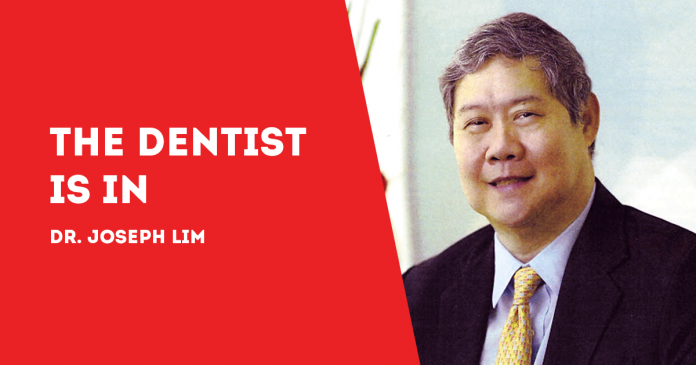
(By Dr. Joseph D. Lim and Dr. Kenneth Lester Lim, BS-MMG, DDM, MSc-OI)
DOES toothpaste expires? Yes, it can and does reach the expiry date.
It may seem trivial, but it’s not: expired toothpaste basically means expired ingredients like fluoride that may no longer provide the protection they are meant to give.
Because toothpaste ingredients become less effective in time, your teeth are no longer protected as much as they deserve to be.
Toothpaste made with fluoride generally lasts up to two years. So better check the expiration date on the box. Or check the consistency of the paste: if it doesn’t taste right, is discolored, or dry, more likely than not the toothpaste has expired and must be thrown away and replaced.
Toothpaste is a dentifrice, a paste, powder or gel used with a toothbrush to clean teeth. It is a mild abrasive that helps remove dental plaque (and promotes healthy gums); it also helps remove food from the teeth and the gaps in between. The fluoride helps prevent tooth decay and gum diseases. More than those, it helps prevent halitosis or bad breath.
Not all toothpastes are created equal.
One of the main ingredients of toothpaste are abrasives (8-20 percent in an average tube). These are insoluble particles that help remove plaque from the teeth. This prevents the accumulation of tartar (calculus) and helps avoid the risk of gum disease.
Abrasives include particles of aluminum hydroxide, calcium carbonate, magnesium carbonate, sodium bicarbonate, various calcium hydrogen phosphates, various silicas and zeolites, and hydroxyapatite.
Fluoride is another major ingredient. In the United States, a toothpaste may have 1,000 to 1,100 parts per million fluoride. In European countries, the fluoride content may be higher. The higher the concentration, the higher the effectiveness in helping prevent tooth decay.
Then there are the surfactants such as sodium lauryl sulfate or related detergents. Found in personal care products such as shampoos, surfactants are foaming agents that spread toothpaste in a uniform manner to make it more efficient.
The anti-bacteria triclosan is a common toothpaste ingredient in the United Kingdom. Triclosan or zinc chloride prevent gingivitis and, according to the American Dental Association, helps reduce tartar and bad breath.
Chlorhexidine is another antimicrobial agent used in toothpastes although it is more commonly found in mouthwash products. Sodium laureth sulfate, a foaming agent, is another ingredient that also possesses some antimicrobial activities.
Other toothpastes may contain essential oils, herbals such as chamomile, neem, chitosan, and Aloe vera as well as natural or plant extracts.
A word of caution: large amounts of toothpaste can be toxic when swallowed.
***
Dr. Joseph D. Lim, Ed. D., is the former Associate Dean of the College of Dentistry, University of the East; former Dean, College of Dentistry, National University; Past President and Honorary Fellow of the Asian Oral Implant Academy; Honorary Fellow of the Japan College of Oral Implantologists; Honorary Life Member of the Thai Association of Dental Implantology; and Founding Chairman of the Philippine College of Oral Implantologists. For questions on dental health, e-mail jdlim2008@gmail.com or text 0917-8591515.
***
Dr. Kenneth Lester Lim, BS-MMG, DDM, MSc-OI, graduated Doctor of Dental Medicine, University of the Philippines, College of Dentistry, Manila, 2011; Bachelor of Science in Marketing Management, De la Salle University, Manila, 2002; and Master of Science (MSc.) in Oral Implantology, Goethe University, Frankfurt, Germany, 2019. He is an Associate Professor; Fellow, International Congress of Oral Implantologists; Member, American Academy of Implant Dentistry and Fellow, Philippine College of Oral Implantologists. For questions on dental health, e-mail limdentalcenter@gmail.com./PN







